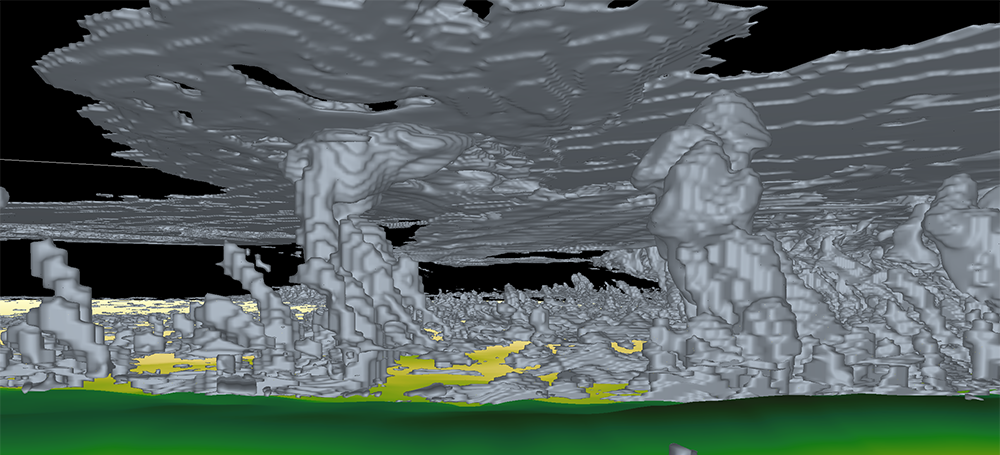Provide Input on ARM’s Next Large-Eddy Simulation Scenario
Published: 12 August 2021
LASSO activity is focused on deep convection simulations from the CACTI campaign in Argentina

The team leading the Atmospheric Radiation Measurement (ARM) user facility’s signature modeling activity provided a sneak peek of its next scenario of focus and gathered feedback from potential users during a virtual community session held July 28. Anyone who missed the session can view a recording of it and still give their input.
The Large-Eddy Simulation (LES) ARM Symbiotic Simulation and Observation (LASSO) activity, which previously combined observations and LES simulations of shallow convection, is expanding to deep convection. Specifically, the LASSO team is focused on deep convection during ARM’s 2018–2019 Cloud, Aerosol, and Complex Terrain Interactions (CACTI) field campaign in Argentina.
Having completed test simulations to establish the model viability, the LASSO team wanted input from the user community before moving from development to production mode.
LASSO Principal Investigators William Gustafson and Andrew Vogelmann led the community session, which drew 45 attendees. After introducing the LASSO-CACTI scenario, Gustafson and Vogelmann presented material in five sections for feedback:
- modeling strategy for mesoscale and LES runs
- model output strategy for frequency and variables
- strategy for observations, diagnostics, and skill scores (the scores indicate how model results compare with real-world data)
- tentative case selection (to be revised)
- user access and tools for working with LASSO-CACTI data.
In 2022, the LASSO team plans to release results of LES simulations for about 10 CACTI case dates with varying convective behavior. Because of the expected size of the data, Gustafson says the team plans to take a “less bundled” approach to observations and model output than it did with shallow convection. The team estimates that the total data set from the LASSO-CACTI scenario will exceed a petabyte; in comparison, the ARM Data Center, which has almost 30 years of data, hit 3 petabytes earlier this year.
Those unable to attend the session can still tell the LASSO team how the new CACTI scenario can best meet their needs. First, please watch the session recording and/or review the following documents:
- slides from the session
- candidate case dates (as of July 26)
- proposed raw and post-processed output variables (as of July 23).
The LASSO team is particularly interested in receiving feedback on output variables and prioritization of case dates. Please provide feedback by leaving a comment on the LASSO-CACTI discussion board or by emailing lasso@arm.gov by August 31.
Keep up with the Atmospheric Observer
Updates on ARM news, events, and opportunities delivered to your inbox
ARM User Profile
ARM welcomes users from all institutions and nations. A free ARM user account is needed to access ARM data.


















